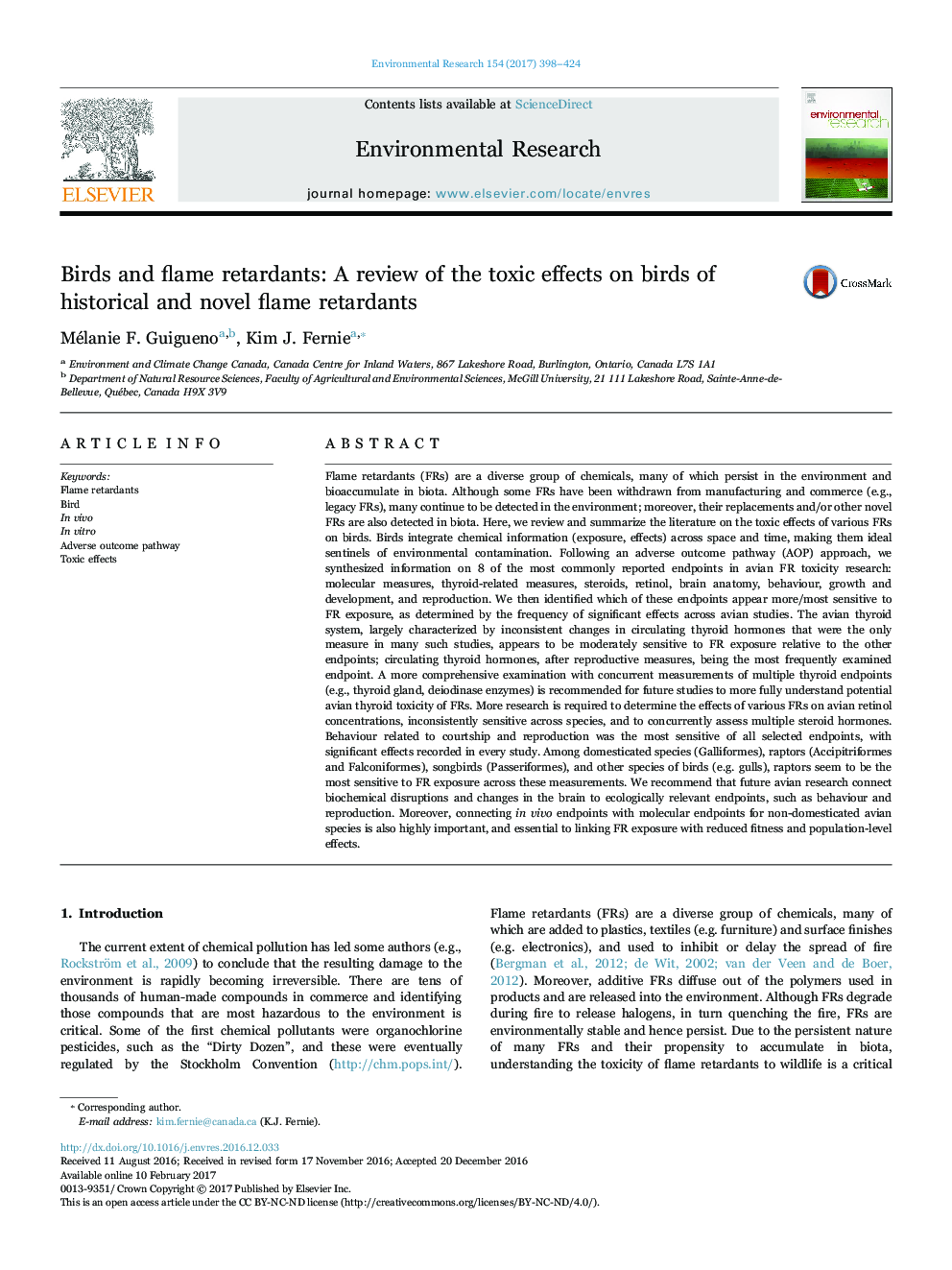| Article ID | Journal | Published Year | Pages | File Type |
|---|---|---|---|---|
| 5756430 | Environmental Research | 2017 | 27 Pages |
Abstract
Flame retardants (FRs) are a diverse group of chemicals, many of which persist in the environment and bioaccumulate in biota. Although some FRs have been withdrawn from manufacturing and commerce (e.g., legacy FRs), many continue to be detected in the environment; moreover, their replacements and/or other novel FRs are also detected in biota. Here, we review and summarize the literature on the toxic effects of various FRs on birds. Birds integrate chemical information (exposure, effects) across space and time, making them ideal sentinels of environmental contamination. Following an adverse outcome pathway (AOP) approach, we synthesized information on 8 of the most commonly reported endpoints in avian FR toxicity research: molecular measures, thyroid-related measures, steroids, retinol, brain anatomy, behaviour, growth and development, and reproduction. We then identified which of these endpoints appear more/most sensitive to FR exposure, as determined by the frequency of significant effects across avian studies. The avian thyroid system, largely characterized by inconsistent changes in circulating thyroid hormones that were the only measure in many such studies, appears to be moderately sensitive to FR exposure relative to the other endpoints; circulating thyroid hormones, after reproductive measures, being the most frequently examined endpoint. A more comprehensive examination with concurrent measurements of multiple thyroid endpoints (e.g., thyroid gland, deiodinase enzymes) is recommended for future studies to more fully understand potential avian thyroid toxicity of FRs. More research is required to determine the effects of various FRs on avian retinol concentrations, inconsistently sensitive across species, and to concurrently assess multiple steroid hormones. Behaviour related to courtship and reproduction was the most sensitive of all selected endpoints, with significant effects recorded in every study. Among domesticated species (Galliformes), raptors (Accipitriformes and Falconiformes), songbirds (Passeriformes), and other species of birds (e.g. gulls), raptors seem to be the most sensitive to FR exposure across these measurements. We recommend that future avian research connect biochemical disruptions and changes in the brain to ecologically relevant endpoints, such as behaviour and reproduction. Moreover, connecting in vivo endpoints with molecular endpoints for non-domesticated avian species is also highly important, and essential to linking FR exposure with reduced fitness and population-level effects.
Related Topics
Life Sciences
Environmental Science
Health, Toxicology and Mutagenesis
Authors
Mélanie F. Guigueno, Kim J. Fernie,
